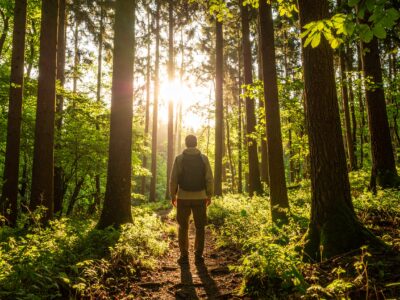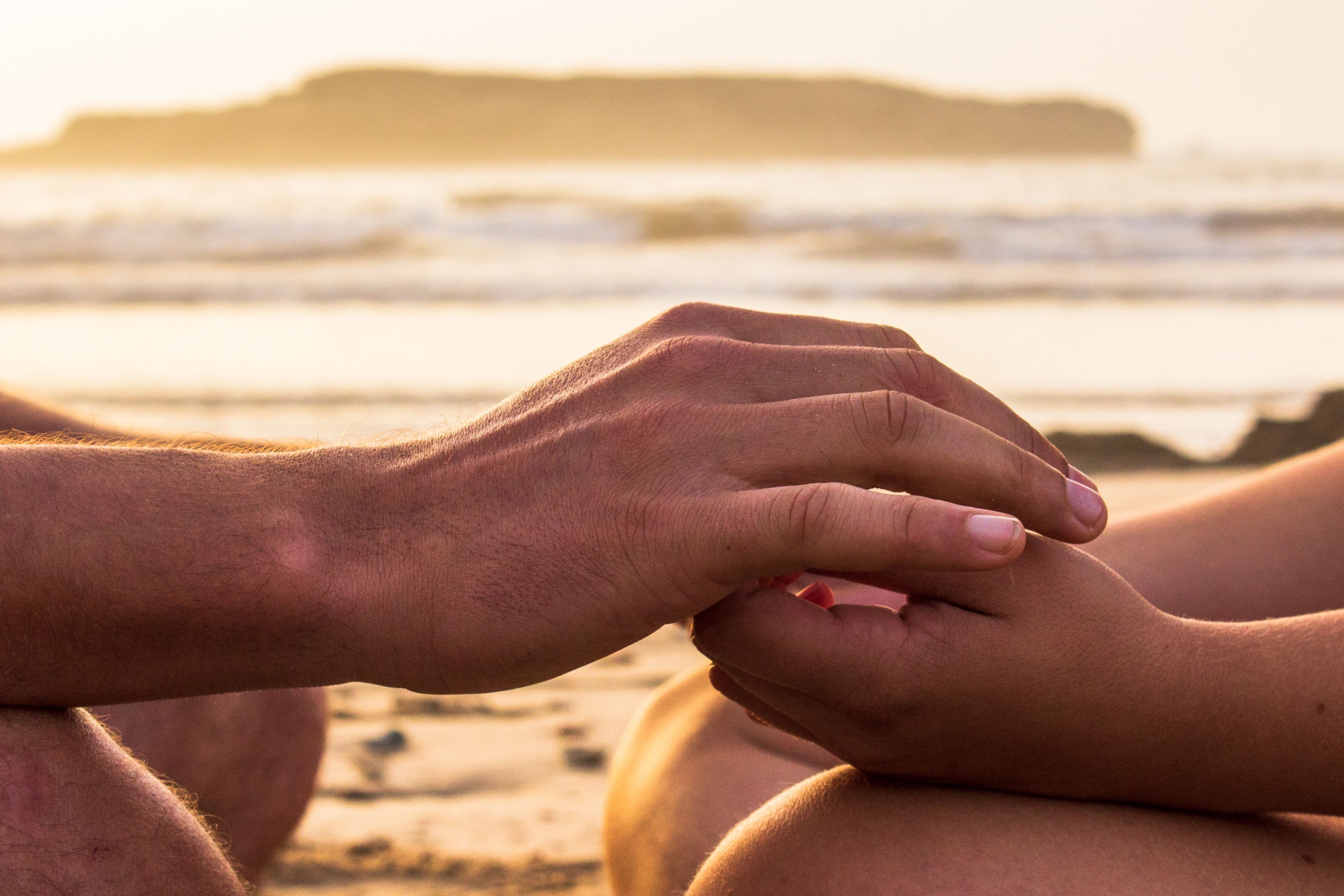Seasons affect more things than the weather – they also influence how we feel emotionally and physically which for individuals with alcohol or drug problems can often trigger a relapse. According to the National Institute of Mental Health, “Seasonal Affective Disorder” (SAD) is a type of depression that comes and goes over the year, typically starting in late fall and early winter when there’s less sunlight and going away in spring and summer. SAD can happen during summer months too but it’s less common. Similar to SAD, “seasonal relapse disorder” is a recurring time of the year that triggers substance use which can be due to actual seasonal changes like the days getting shorter and colder or the one-year anniversary of sobriety. Let’s explore how seasonal changes affect sobriety and what you can do to prevent seasonal relapse disorder.
What Is Seasonal Affective Disorder?
Seasonal Affective Disorder is a diagnostic term that describes how the emotional state is influenced by seasonal changes. According to anatomical research, our skin possesses vitamin D receptors that, when exposed to sunlight, activate melanocytes which synthesize melanin. Melanin goes through its own biochemical pathway to create serotonin, a main neurochemical in mood regulation. Individuals with SAD may not only have trouble regulating serotonin but also produce less of it during winter months.
An example of vitamin D’s effect on mood is when you go on a beach vacation – as you spend time outside and develop a tan, you feel happier and more relaxed. However, in late fall and early winter, we spend more time indoors and receive less sunlight which decreases serotonin synthesis and availability. This may be why depression seems to be so widespread during winter (aka “winter blues”). Less sunlight also disrupts the body’s circadian rhythms and increases the production of melatonin, a sleep hormone, which explains why we feel more tired and lethargic as the days get darker.
While it is true that we might just be in a better mood during the summer because some of us have more time to relax, enjoy being around our friends and families, and may take vacation or time off from work, the research has consistently shown that SAD is integrally related to biochemical processes in our brain and our interaction with our environment and the changing seasons.
Why Seasonal Changes Can Affect Addictive Behaviors and Recovery
For people recovering from addiction, seasonal changes can influence drug and alcohol use in multiple ways. For example, if a person tends to cope with mood fluctuations through use, then seasonal changes may escalate their use. As seasons begin to change, an individual may anticipate the change and begin using as preparation to cope with complicated feelings.
Most of us have had the experience where we smell suntan lotion or bug spray and instantly we’ve transported in time and place to that summer ten years ago on the beach where we used that lotion or spray. Or we smell a perfume or cologne, triggering a flood of memories of a person, time, and place in our lives which may have wonderfully amazing associations or equally horrible and tragic memories.
For an individual struggling with a substance use disorder or addiction, these memories can be triggered by the people, places, and things associated with drug or alcohol use which can lead to seasonal relapse disorder. Oftentimes, we’re more likely to spend time with certain people and go to certain places at particular times of the year like the holidays or when celebrating birthdays or going to familiar vacation spots. If these occasions and places were times when we engaged in excessive drinking or drug use, then their occurrence can be associated with powerful memories and reminders of those past experiences and intense cravings.
One Year Anniversary Sobriety Dates
Anniversary sobriety dates, for example, can be very difficult for recovering people, especially one and two full years from an abstinence recovery date or sober “birthday.” While I have found little to no research that confirms these observations, anecdotally, we hear many clients struggle at six and nine months of recovery and sobriety up to and through their one year anniversary. Further research should examine whether seasonal relapse disorder can explain this phenomenon. If we consider that one year ago someone decided to enter treatment, go to rehab, call a therapist, or start attending alcoholics anonymous meetings, then things must have been pretty bad and desperate. As they approach their one year anniversary, they’re reminded of their addiction bottom.
Imagine what was happening in the few weeks, days, or months before they got clean one year ago and it was probably one of the hardest times in their life. That time period was associated with all sorts of cues, triggers, and signals which are probably salient now in the present moment, even though they’re clean and sober. If someone hit bottom in the spring after their father died, they broke up with their boyfriend, or wrecked their car after yoga class but now they’re almost 10-11 months sober, then as the spring flowers come out and the old leaves give off that damp smell, as the air is feeling warmer, then these seasonal changes come with powerful memories of last year’s bottom. Those memories can make them feel anxious, depressed, and worried. Additionally, excitement or positive feelings can also be a trigger for some people because individuals in recovery can have complicated reactions to positive feelings leading them to cravings even when things are going well which can be so new for them.
Signs and Treatments of SAD and Addiction Relapse
In the United States, SAD is more common in northern regions and affect about 4% and 6% of the population. Some people are more susceptible to SAD like women (who are diagnosed four times more than men), adolescents and young adults, and those with a genetic history. Additionally, people with depression or bipolar disorder can have their symptoms worsen during this time.
Symptoms of SAD include:
- Irritability
- Fatigue
- Moodiness
- Feeling sluggish
- Sleepiness
- Food cravings
- Weight gain
- Excessive emotional outbursts
Although less common, some people can experience SAD in the summer and may experience:
- Depression
- Insomnia
- Weight loss
- Anxiety
What differentiates SAD from depression is that there’s a seasonal pattern rather than a regular recurrence of depression at a particular time of year. The American Academy of Family Physicians recommends treating SAD with light therapy, antidepressant medications, and cognitive behavioral therapy (CBT) although CBT is only equally effective to other forms of therapies. Exposure to a light therapy unit for 30 minutes daily in the morning can alter the brain’s chemicals and affect mood. Improvement can be seen as little in one to two weeks after starting light therapy. (Tanning beds shouldn’t be used for light therapy because they have ultraviolet rays which can damage body tissue and cause cancer.)
It’s crucial to reach out for support if you experience symptoms of SAD, especially if you’re in recovery because depression and other forms of mental illness are major contributing factors in seasonal relapse disorder. Having a holistic health approach will help you deal with the physical, emotional, and mental symptoms associated with seasonal changes. Here are some ways to treat seasonal relapse disorder:
- Talking to a psychologist, licensed professional counselor or certified addiction counselor
- Reducing stress any way that is possible
- Increasing vitamin D/light exposure
- Eating healthy, learning to love to eat
- Exercising regularly, exploring new exercise, yoga
- Taking antidepressant medication when appropriate
- Picking up a new hobby, exploring new and old hobbies, positive addictions
- Spending time with other people, the number one most effective boost for happiness
- Taking a trip to a warmer, sunnier climate
- Practicing mindfulness, meditation, yoga, finding a spiritual connection
Learn to Identify Relapse Triggers, Cues, and Signs
Essential to combating seasonal relapse disorder is becoming aware of the people, places, and things that can contribute to relapse. If you hang out with monkeys, soon you too will be eating bananas. If you go to a barbershop (place), you sit in the barber stool (thing), and you see the barber (person), you’re going to get a haircut (relapse). So if you think you can go to the bar and see your friends and sit in a bar stool and not drink, then put down the stinkin’ thinking and think again.
Part of any drug and alcohol treatment plan involves learning through individual therapy about one’s own unique ‘relapse profile’ or ‘relapse signature.” These are the factors and variables, whether seasonal or not, that can contribute to and fuel a relapse. Becoming increasingly more aware of ourselves is what recovery, therapy, and psychology are all about. Freud said that the purpose of psychotherapy is to make that which is unconscious conscious. When people can understand themselves more, then feelings, thoughts, and triggers will have less power and make more sense. This awareness can then help us use triggers and cues to get more of what we want and need in our lives rather than lead us astray further into drug and alcohol use.
Mindfulness is a somewhat new concept in western medicine but it’s been around for ages in eastern philosophy. See how mindfulness can help people in recovery avoid seasonal relapse disorder.
Mindfulness for Seasonal Relapse Disorder
“Mindfulness-Based Stress Reduction” was created by Jon Kabat-Zinn in 1979 but the roots of it go much deeper. Based on old Buddhist practices, mindfulness is meant to foster awareness, inquiry, acknowledgment, and letting go thereby allowing one’s mind to be focused solely on the present. One of the tenets of mindfulness is that if the mind dwells on the past, it may experience depression; if it dwells on the future, it may experience anxiety. However, if the mind is able to focus only on the here and now, all signs and symptoms of depression and/or anxiety will fall to the wayside. That’s when you’re able to truly live in the present.
As you read this, try to become aware of what’s in your mind. Are you thinking about yesterday? Or today’s to-do list? Are you reading this fully present or are you somewhat distracted? Awareness and introspection are where mindfulness originates. As we practice mindfulness, we’re able to identify and become aware of our minds, identify thoughts and feelings that may not have been noticed before, begin the reflective process of inquiry, and work towards letting go. It’s why mindfulness can help people in recovery change how they respond to seasonal triggers by becoming aware and examining their emotions and thoughts which can help them make healthier choices.
Therapy Services For Addiction Recovery and Relapse
Therapy is an effective treatment for people who are struggling with SAD, seasonal relapse disorder, and addiction. A major task of therapy is determining each individual’s unique relapse profile or relapse signature. At Jeremy Frank and Associates, we provide treatment, psychotherapy, and counseling on issues related to alcohol, opioids, prescription medications, and more. While it’s best to seek therapy for addiction and sobriety maintenance before seasonal triggers happen, anytime is better than never. Whatever the season, addiction therapists are here to help. If you have any questions or just need to talk with someone, please fill out the contact form or call (215) 356-8061, or email [email protected].




